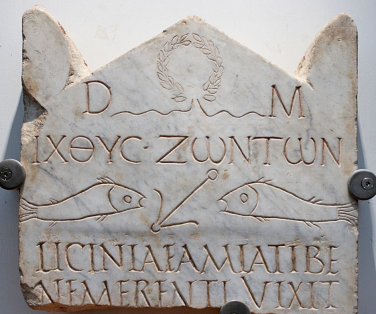Pictured below is a lintel inscription dated to the fifth century A.D.; this piece is currently held in the Museum of Byzantine Culture in Thessaloniki.

The stone is marble, described as off-white and ‘granular’ (κοκκωτό). It is also described as a private inscription, meaning – as I believe – that it was commissioned by an individual rather than by the state or for a public occasion.
The words – written in all capital letters, with the ω form for the omega – read as follows:

Note that the ‘Ν’ looks, at first glance, to be an ‘Η’. Unfortunately, we don’t have an actual ήτα to compare it to in this inscription.
What does the inscription mean? If we assumed a missing ‘Ν’ on the end we would have the words ‘των καλλιεργούντων’. The second word is thus a participle (masculine plural genitive) from the verb καλλιεργώ. This verb is not found in the New Testament, but does exist in a modern Greek vocabulary, with the meaning ‘I grow/cultivate’ (e.g., a crop) or ‘I promote/foster’ (e.g., good relations).
But that’s not the end of the story. The word ‘καλλιεργώ’ derives from a word for good, or beautiful (καλός) and a word for work or deed (ἔργον). Together, they suggest something like ‘I do good work’. The museum description states that these words correspond to dedicatory inscriptions, possibly taken from a prayer in the liturgy of St. Basil, part of which reads as follows:
Μνήσθητι, Κύριε, των καρποφορούντων, και καλλιεργούντων εν ταις αγίαις σου Εκκλησίαις
Remember, Lord, those who bear fruit and do good works in Your holy churches


